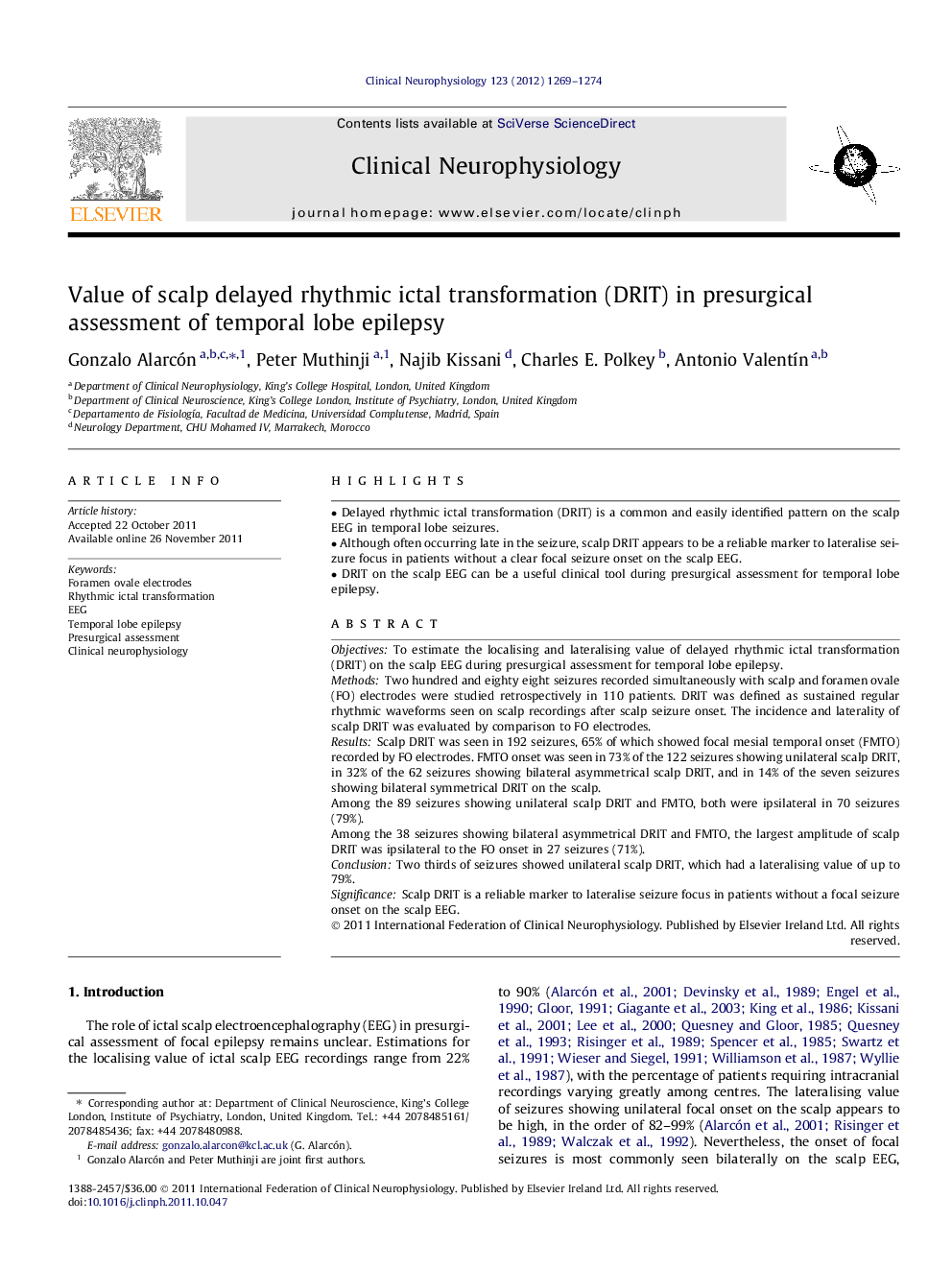| Article ID | Journal | Published Year | Pages | File Type |
|---|---|---|---|---|
| 3045488 | Clinical Neurophysiology | 2012 | 6 Pages |
ObjectivesTo estimate the localising and lateralising value of delayed rhythmic ictal transformation (DRIT) on the scalp EEG during presurgical assessment for temporal lobe epilepsy.MethodsTwo hundred and eighty eight seizures recorded simultaneously with scalp and foramen ovale (FO) electrodes were studied retrospectively in 110 patients. DRIT was defined as sustained regular rhythmic waveforms seen on scalp recordings after scalp seizure onset. The incidence and laterality of scalp DRIT was evaluated by comparison to FO electrodes.ResultsScalp DRIT was seen in 192 seizures, 65% of which showed focal mesial temporal onset (FMTO) recorded by FO electrodes. FMTO onset was seen in 73% of the 122 seizures showing unilateral scalp DRIT, in 32% of the 62 seizures showing bilateral asymmetrical scalp DRIT, and in 14% of the seven seizures showing bilateral symmetrical DRIT on the scalp.Among the 89 seizures showing unilateral scalp DRIT and FMTO, both were ipsilateral in 70 seizures (79%).Among the 38 seizures showing bilateral asymmetrical DRIT and FMTO, the largest amplitude of scalp DRIT was ipsilateral to the FO onset in 27 seizures (71%).ConclusionTwo thirds of seizures showed unilateral scalp DRIT, which had a lateralising value of up to 79%.SignificanceScalp DRIT is a reliable marker to lateralise seizure focus in patients without a focal seizure onset on the scalp EEG.
